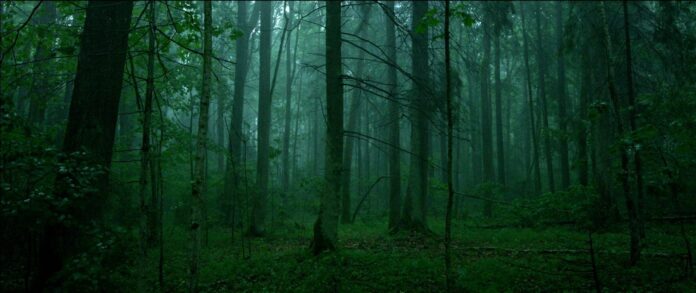
The website https://deepbaltic.com is described as a place for travel and culture articles relating to Estonia, Latvia and Lithuania. “We offer long reads, photo essays, reports and interviews on every aspect of life in these fascinating but often overlooked countries”. Some articles are not new, but still very interesting.
In 2019, for example, staff interviewed the creator of a nature documentary called The Ancient Woods (Sengirė in Lithuanian), the result of years of filming in the forests of Lithuania. With no narrative, only the noises of the wood, it immerses viewers in the sheer variety of life that exists there – “from the forest thickets to the wolves’ caves and up to a black stork’s nest, and then deep into the water to the underwater forest, returning after to the human beings inhabiting the edge of the woodland.” At one point, the camera is taking an unhurried look at an uneasily sleeping dormouse, then a pair of capercaillies (kurtiniai) making their odd clicking noises as they fight a duel, a badger, and birds feeding their young with frogs they’ve caught.
After its release, it became the most-viewed documentary in Lithuanian history, receiving acclaim outside Lithuania as well, awards at international film festivals. Deep Baltic’s Will Mawhood interviewed the director of the film, Mindaugas Survila, about the experience of filming in the forests, the importance of ancient woods to Lithuania and the world, and his future projects.
 Survila noted that it is a film about the ancient woods, meaning woods where trees are growing, falling and growing up again. For some trees, the process takes about three hundred years; for some trees, like oaks, it’s six hundred or one thousand years.
Survila noted that it is a film about the ancient woods, meaning woods where trees are growing, falling and growing up again. For some trees, the process takes about three hundred years; for some trees, like oaks, it’s six hundred or one thousand years.
In Lithuania there are small areas with the remains of these woods, so the filmmakers collected footage of them and created a fairytale. There were about eight scientists working on the film, and some additional location scouts as well. So it took eight years of preparation and four years of shooting.
About 80 people are listed in the titles at the end of the film, but Survila said he was actually mostly working alone during filming. Others were working a different sites.
He loved the forest in his childhood and received a camera as a gift from his father. Survila began taking photos of birds and other animals, and then studied biology at Vilnius University. Later he began to work with cinema professionals, and to study cinema. He is from Aukštaitija, near Utena, in the eastern part of Lithuania, where there are many lakes and forests.
The film was popular, he thinks, because “people need to go to the forest, especially in Lithuania, because Lithuanians are actually the last pagans in Europe – and in our blood we still have this”.
Survila says it’s an educational movie. “We wanted to tell people what the forest means; it’s not just about money – that you can cut down some trees to sell and you have money. I wanted to say that the forest is something much bigger, much wider.” Why did he choose to have no voiceover? “With no narrative, different people can look at different things, and these different things will be interesting to them. It’s not necessary to tell people at each step what and how they must think.”
You can find out more about The Ancient Woods and Mindaugas Survila’s work in Lithuanian on the film’s website https://www.sengire.lt/
All images by Mindaugas Survila/The Ancient Woods






























